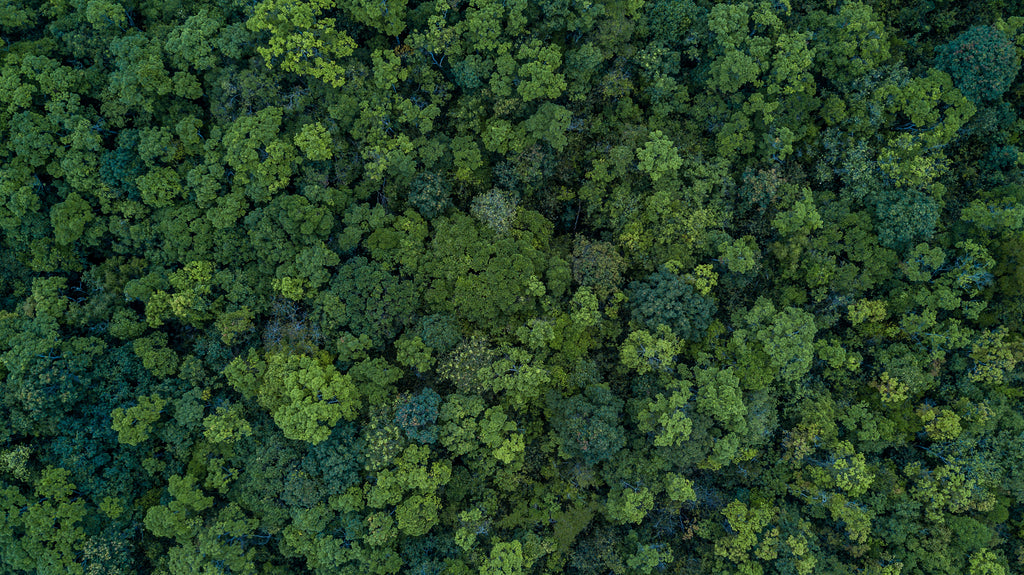Paper is a renewable resource. Why should you use recycled paper?
To Recycle or Not to Recycle
Paper is a wonderful product with thousands of applications that we use in our lives every day. Since its early creation in ancient Egypt, paper products have evolved and changed how we package and transport solids and liquids, decorate and clean our homes, record, document and share information, and have even provided humanity with a currency. Unlike plastic, which is created from hydrocarbons or oil, paper is both renewable and biodegradable. Paper products can break down and decompose in as little as 2-6 weeks, a stark contrast to plastic, which can take 400+ years to break down entirely. Running out of trees because of paper production has been a concern for generations, but it is primarily a myth created only by a lack of information. In fact, the opposite is true. We are planting more and more trees each year because we use paper. On average, we plant 2.5 billion trees annually for paper production. It may be hard to believe, but we now have more trees in the United States than we did 100 years ago.

If we aren't running out of trees, why should we make products out of recycled paper?
Because there isn't one singular threat facing our beautiful planet, the answer is slightly complicated.
One of the reasons we use recycled paper is that making paper or cardboard from previously used resources creates 74% less air pollution. While it is a renewable resource, the process of making paper releases several types of air pollutants, ranging from formaldehydes and solvents to particulate pollution, i.e., paper dust. Some solvents, such as ozone-depleting hydrochlorofluorocarbons, are released during the bleaching process.
Reduction in acid rain and greenhouse gasses
The ozone isn't the only environmental concern associated with paper making. Paper processing plants also release numerous greenhouse gasses that can contribute to both acid rain and climate change; these include sulfur dioxide, nitrogen dioxide, and carbon dioxide. By reducing the release of these harmful gasses, we can improve air quality, decrease acid rain, and help prevent global warming.
Keeping our water clean
Better air quality isn't the only reason to recycle. Not all of the chemicals used in the creation of paper end up in the air. Making paper requires bleaching and treatment with dangerous chemicals, which end up in wastewater. The most notable chemicals are toluene, methanol, and formaldehyde. These chemicals can have disastrous effects on the reproductive ability of many aquatic creatures, disrupting the ecosystem of our rivers and lakes. There are many restrictions in place to help prevent these chemicals from making their way into the water system. However, it is difficult to avoid all water pollution even with the restrictions. Recycled paper can help reduce these levels even further, as recycling requires fewer chemicals, resulting in 35% less water pollution.
Keeping our landfills from overfilling
Lastly, recycling keeps paper from going into landfills. Landfills may not sound like an enormous problem. There are many theories that we could continue at the same rate for thousands of years before space even starts to become an issue. Regulations have also increased and made landfills more eco-friendly than ever before. Today, there are many beautiful parks built on top of what had been a landfill only a few years prior. However, the real problem begins when the paper in the landfill starts to decompose. According to Waste Recycling, "when taken to landfill, paper releases methane, which is a pollutant. Avoiding an excessive production of these gasses is crucial in maintaining a suitable balance." While it is a good thing that paper decomposes, we face further trouble with air pollution even after the paper has been created. Recycling helps mitigate this problem.

How much paper can we recycle?
As a whole, recycling paper is better for the environment than creating it from scratch. Unfortunately, there is no way to rely 100% on recycled paper for all of our needs. There will always be losses in the production process, so we will always need to create new paper that we can recycle someday. In addition, many applications do not work with recycled paper; some include toilet paper and greasy food boxes. The good news is that in the US, we have recovered over 66.8% of all paper used in a year. According to Green Biz, the maximum efficiency we can achieve is 80%, so we are getting closer to that goal, considering that we only recycled 33.5% in 1990.
What may the future hold for the environment and the paper industry?
While significant improvements have been made to realize the full potential of paper as a renewable resource, there are still many ways paper products can become greener in the future. For example, recycling plants often rely on electricity from fossil fuels, which will become less of an issue in the future as society embraces cleaner energy sources. There is also the issue of cleaning wastewater after recycling the materials. Advancements in phytoremediation, which is the process of utilizing trees to purify water and contaminated soil, hold a lot of promise in improving this problem.
If you would like to learn more about innovations in paper recycling, you can subscribe to our newsletter to hear when we release our next article covering future paper recycling concepts.
